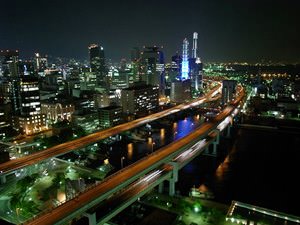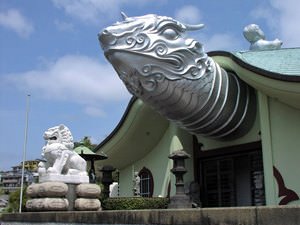
The actual state language of Japan is Japanese. The locals call it nihonga. It is worth noting that more than 142 million people speak Japanese fluently today, and it is the native language of more than 130 million people. This enables this linguistic structure to occupy a worthy 8th place in the world ranking based on its prevalence. Most of the people who speak Japanese naturally live in the Land of the Rising Sun. In addition, a significant number of people still live in Hawaii and Brazil to date. In one of the States of America, the Japanese language was even granted the status of state language.
Japan is a country with a constitutional monarchy. The head of state is the Emperor, but his functions are more ceremonial than legislative. The …
Read further
It is worth noting that in the history of the formation of the Japanese language, there are still many unexplained facts. Some scientists advocate that the Altai language participated in the formation of the Japanese dialects. Others believe that Japanese is based on the Australian language. The path leading to the formation of the language in Japan, met with various obstacles. Today it can be said for sure that modern Japanese was significantly complemented by various dialects from Chinese and vocabulary from English. This is why residents of megacities, as well as the local population of remote provinces may not even understand each other.
Linguists claim that at least 10 different variations of the Japanese language are used in the country. First of all, this state of affairs is connected with territorial peculiarities. For example, the islands were isolated and were forced to develop without external influence. All Japanese dialects differ in their vocabulary, morphology, and the use of certain parts of speech. Very rarely do dialects differ in pronunciation. The most distant directions of Japanese are the southern and northern dialects. Despite this, every citizen of Japan perfectly knows the classical Japanese language that is employed while teaching in school. Copyright www.orangesmile.com
The Japanese economy today is among the five most developed economic structures in the world. But the Japan’s share of the global GDP is constantly …
Read further
Today, the Japanese language is characterized by original writing, the symbols of which are not used in any other language of the world. Writing is based on a combination of syllabic phonography and ideography. Despite the fact that for many foreigners Japanese and writing are considered very difficult, the level of literacy in Japan is at a very high level. Japan is actively developing and the number of visitors is growing every year. It is for this reason that there are various communities on the territory of Japan that are similar in their nationality, but no one gives the official status to regional languages of national minorities in Japan, because even the Japanese themselves have no government confirmation.
![]()
The religious situation in the Land of the Rising Sun is fairly homogeneous. Most believers consider themselves to be either Buddhists or Shintoists. At the same time, a sufficiently large percentage of Japanese believers can simultaneously classify themselves as belonging to these two religious denominations. According to last year’s census, about 92% of the total population consider themselves to be Buddhists or Shinto. The national religion in Japan has been formed for quite a long period. The ancient Japanese firmly believed in the existence of spirits, in magic, and in the magical properties of totems. Up till now, these mythological things are significant for many. In addition, the Japanese have a rather mystical idea of the world of the ancients. They therefore strive to spiritualize any nonliving force. Only according to the basic principles of Shintoism, does each object have its own soul, including stones and objects. The main spiritual principle for every believer should be the desire for unity with nature. The peculiarity of this religious trend is the absence of any specific distinction between good and evil in their scriptures.
These spots really worth the attention of a real traveler-researcher.
…
Read further
Buddhists believe in the existence of Nirvana, during which the soul separates from the body. They also believe in reincarnation, that is life after death, and also worship their totems. It is worth noting that the Buddhist religion is one of the simplest in terms of worship. In this case, the magnificent decorations for the priests, bright ceremonies, jewels and others items, are not used. According to Buddhists, faith should be accessible to everyone. However, despite such a deep history of the two most powerful religions, all the major traditions of Buddhism and Shintoism today are not performed by all. This is welcomed only in narrow circles of old Believers. Modern Japanese youth is quite reserved about religion and do not consider it necessary to adopt the lifestyle of their ancestors. Although at the same time, the basic principles of Buddhism and Shintoism are supported by practically everyone. Christianity accounts for not more than 2% of the total population of Japan.
 The actual state language of Japan is Japanese. The locals call it nihonga. It is worth noting that more than 142 million people speak Japanese fluently today, and it is the native language of more than 130 million people. This enables this linguistic structure to occupy a worthy 8th place in the world ranking based on its prevalence. Most of the people who speak Japanese naturally live in the Land of the Rising Sun. In addition, a significant number of people still live in Hawaii and Brazil to date. In one of the States of America, the Japanese language was even granted the status of state language.
The actual state language of Japan is Japanese. The locals call it nihonga. It is worth noting that more than 142 million people speak Japanese fluently today, and it is the native language of more than 130 million people. This enables this linguistic structure to occupy a worthy 8th place in the world ranking based on its prevalence. Most of the people who speak Japanese naturally live in the Land of the Rising Sun. In addition, a significant number of people still live in Hawaii and Brazil to date. In one of the States of America, the Japanese language was even granted the status of state language.
 The religious situation in the Land of the Rising Sun is fairly homogeneous. Most believers consider themselves to be either Buddhists or Shintoists. At the same time, a sufficiently large percentage of Japanese believers can simultaneously classify themselves as belonging to these two religious denominations. According to last year’s census, about 92% of the total population consider themselves to be Buddhists or Shinto. The national religion in Japan has been formed for quite a long period. The ancient Japanese firmly believed in the existence of spirits, in magic, and in the magical properties of totems. Up till now, these mythological things are significant for many. In addition, the Japanese have a rather mystical idea of the world of the ancients. They therefore strive to spiritualize any nonliving force. Only according to the basic principles of Shintoism, does each object have its own soul, including stones and objects. The main spiritual principle for every believer should be the desire for unity with nature. The peculiarity of this religious trend is the absence of any specific distinction between good and evil in their scriptures.
The religious situation in the Land of the Rising Sun is fairly homogeneous. Most believers consider themselves to be either Buddhists or Shintoists. At the same time, a sufficiently large percentage of Japanese believers can simultaneously classify themselves as belonging to these two religious denominations. According to last year’s census, about 92% of the total population consider themselves to be Buddhists or Shinto. The national religion in Japan has been formed for quite a long period. The ancient Japanese firmly believed in the existence of spirits, in magic, and in the magical properties of totems. Up till now, these mythological things are significant for many. In addition, the Japanese have a rather mystical idea of the world of the ancients. They therefore strive to spiritualize any nonliving force. Only according to the basic principles of Shintoism, does each object have its own soul, including stones and objects. The main spiritual principle for every believer should be the desire for unity with nature. The peculiarity of this religious trend is the absence of any specific distinction between good and evil in their scriptures.



